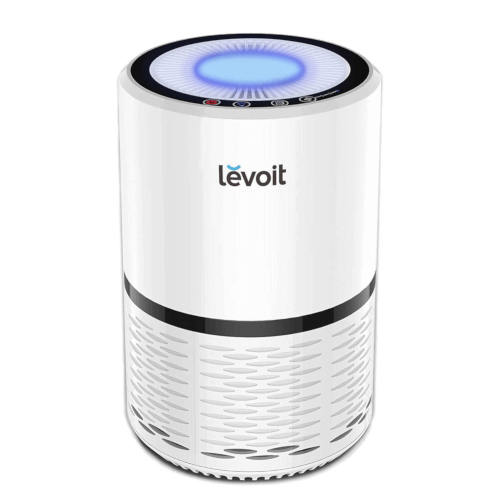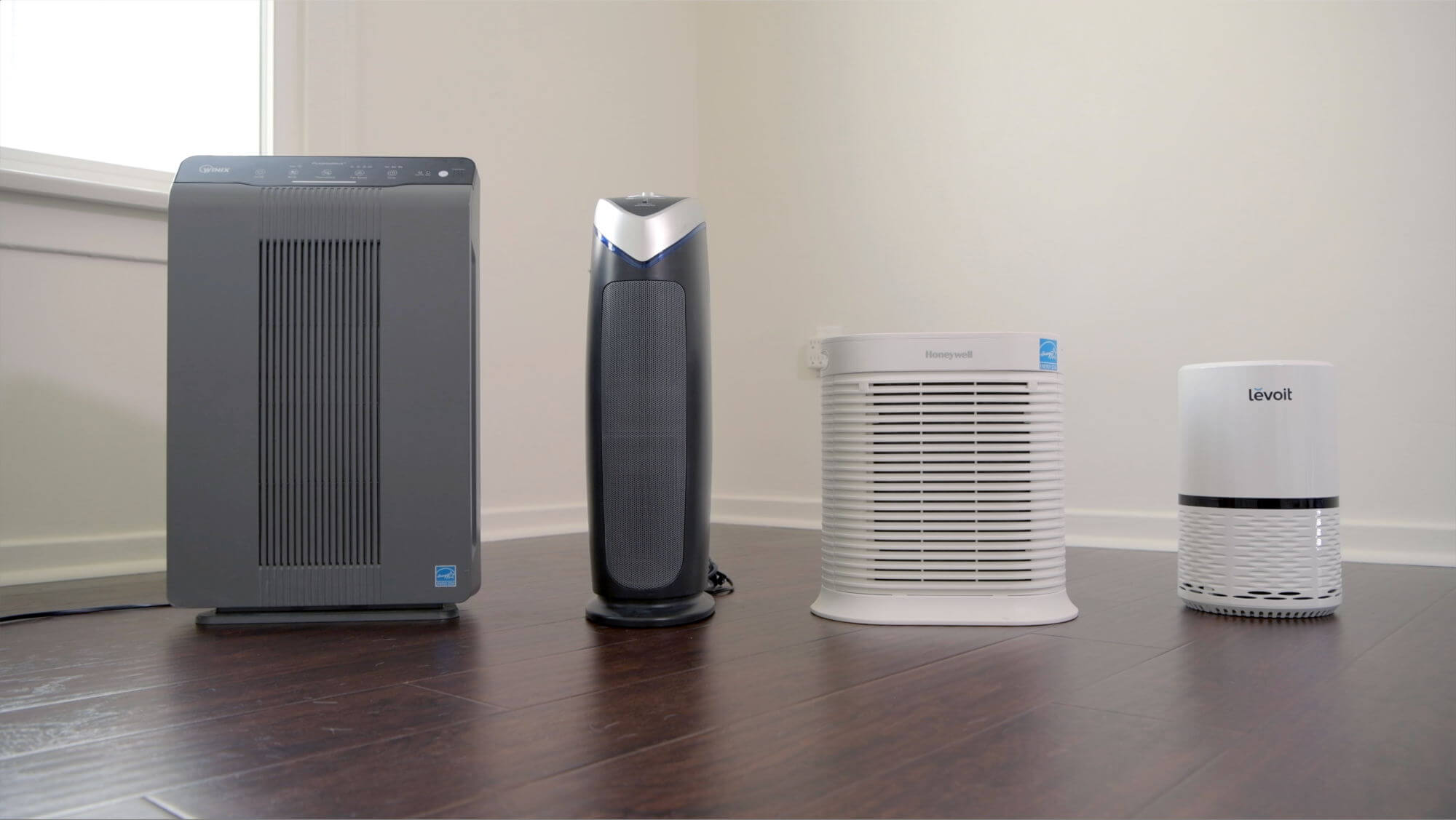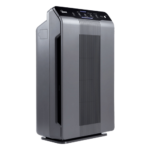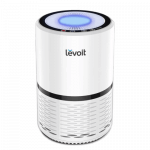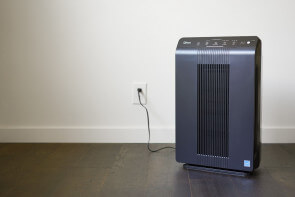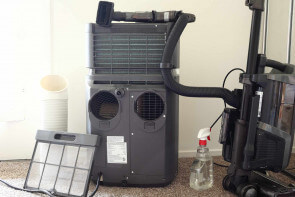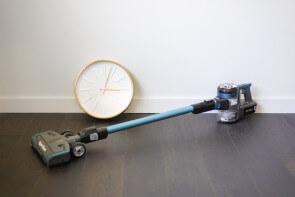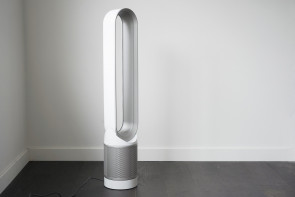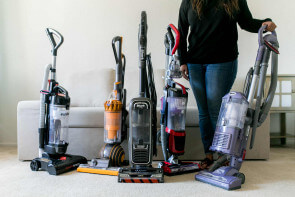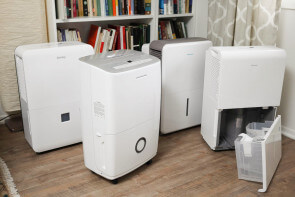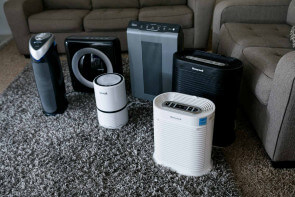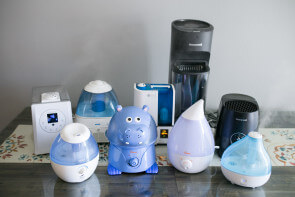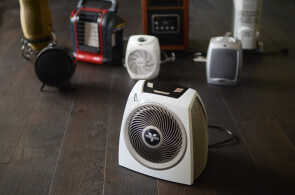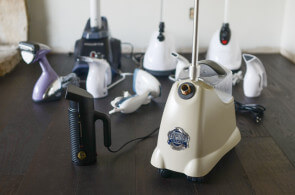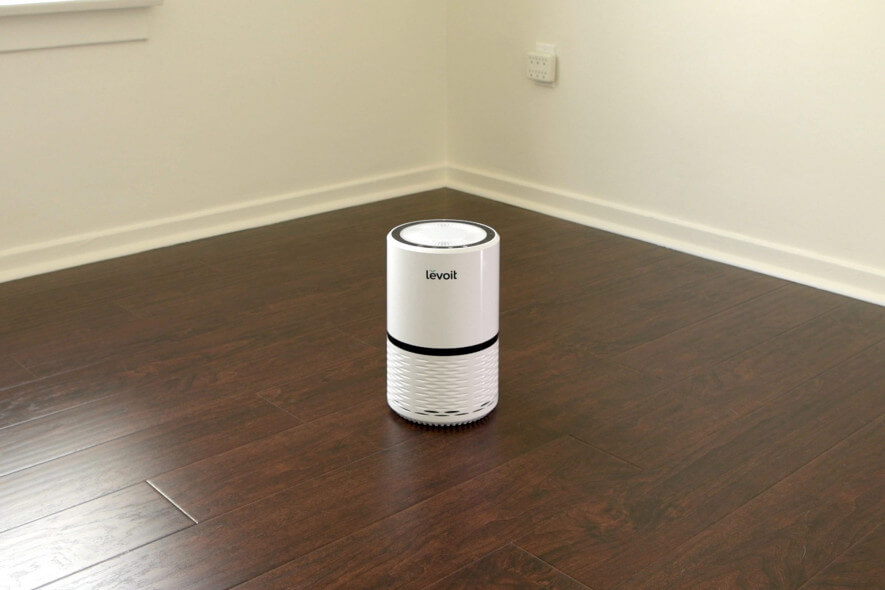
Levoit LV-H132 Air Purifier Review
After testing the attractive and budget-friendly Levoit – LV-H132 air purifier against the top competition, we don’t think you should buy one. The Levoit air purifier filter seems to be good at capturing particles, but the fan is so small that it takes an hour and a half to get the air in a small bedroom past the filter enough times to clean it. A better compact air purifier takes just thirty minutes, and our pick for the best air purifier is a bigger model that only takes fifteen minutes.
Featured Product
After testing the attractive and budget-friendly Levoit – LV-H132 air purifier against the top competition, we don’t think you should buy one. The Levoit air purifier filter seems to be good at capturing particles, but the fan is so small that it takes an hour and a half to get the air in a small bedroom past the filter enough times to clean it. A better compact air purifier takes just thirty minutes, and our pick for the best air purifier is a bigger model that only takes fifteen minutes.
Table of contents
- What can air purifiers do?
- Testing the Levoit
- Compared to other air purifiers
- Cost of Levoit air purifier filters
- The bottom line
What can air purifiers do?
The High Efficiency Particulate Air (HEPA) filter standard means a filter can capture 99.97% of the tiny, most-difficult-to-trap particles in the air — tiny means 0.3 microns in diameter, the size of some virus and bacteria bodies. Note that performance with bigger or smaller particles is even better.
But even with that amazing capture rate, if the air purifier fan doesn’t move all the air in your room through the filter a few times per hour, even dust coming in through windows and doors may be more than the purifier can keep up with.
If you’re making a lot of dust or smoke inside, ventilation or more effective cleaning will make a much bigger difference than filtering the air. Check out our full review for a list of steps you should take before you resort to an air purifier.
What about the coronavirus?
When we researched our review of the best air purifiers, we asked experts at the California Air Resources Board if the 99.97% capture rate of a HEPA filter is enough to protect against virus exposure.
Jeffery Williams, from the Indoor Exposure Assessment team, sums up the science: “There’s really no clean-cut answer. The tests for these devices are using a very contrived scenario when they’re quantifying efficiencies. Specific dust sizes are generated and then the amount of dust before and after the filter is measured and you get an efficiency. In the natural world, you’ve got a very broad range of particles; some bacteria and viruses are large enough to get captured, some aren’t.”
If you want to take the precaution of filtering your air, remember that air purifiers are only effective at removing particles that are floating through your room — they can’t do anything about a virus body trapped behind a closed door or stuck to surfaces.
The good news is that a virus like SARS-CoV-2 is killed easily with soap and water, or a 60–70% alcohol solution in hand sanitizer if you don’t have access to a sink.
Testing the Levoit
The differences between air purifier models come down to three questions: how big of a room can it clean, how loud is it, and how much will it cost to run?
The Association of Home Appliance Manufacturers (“AHAM”) with their Verifide program have developed a standard to answer the first question. They test air purifiers with three categories of air pollution: large dust particles, pollen-size particles and smoke-sized particles. The result is certified as a “clean air delivery rate” (CADR) — the cubic feet of air per minute an air purifier can clean. (Multiply the CADR number by 1.66, and you’ve got an estimate for square footage the purifier can handle.)
We mostly purchased air purifiers that are already certified this way, but a few top-selling models like the Levoit weren’t. Levoit gives their own specification for how big a room the machine is supposed to be suitable for, so we set up a controlled test to get a fair comparison.
We sealed off a test chamber (equivalent to a very small 68-square-foot room) with a plastic barrier and introduced controlled amounts of dust and tobacco smoke, then recorded the falling number of ultra-fine half-micron particles detected by a laser-powered Dylos particle counter.
We ran tests with each air purifier on both high and low speed settings to see how much performance you’re giving up in order to turn down the noise. Along with the performance tests, we also checked noise output of each model and checked power draw at different fan settings.
Levoit performance results
The chart above is a comparison between the Levoit – LV-H132 and the GermGuardian – AC4825. They retail for about the same price and have similar performance claims in their advertising. The biggest difference is that the GermGuardian has been tested and certified to deliver 108 CFM (cubic feet per minute) of clean air when filtering smoke. (We tested one more certified CADR-100 air purifier, and its performance was similar to the GermGuardian.) If you believe the advertising, these machines should be able to clean the air in a room double the size we were testing in.
The Levoit took 10 minutes longer to clean half of the thick cloud of dust particles out of a small room, and after 40 minutes at top speed it still didn’t take out as much as the competitors on their lowest speed settings.
Levoit used to simply claim that this air purifier was suitable for rooms up to 129 square feet. They’ve since updated their marketing to include a theoretical CADR of 40 cubic feet per minute, which means you’d filter the air in a room that size just more than twice per hour. With dust coming in the door or a person moving around, you could easily have more dust coming into the room and swirling around than the Levoit can keep up with.
If you leave the Levoit running for long enough, it can probably capture all of the dust from some small rooms. If your outside air quality is good enough (or your room is sealed tightly enough) that you’re not worried about outside dust coming in through the doors and windows, you probably don’t need an air purifier at all.
If you’re making dust and smoke inside from moving around, cooking and cleaning, we recommend a bigger air purifier that can actually make a noticeable difference quickly.
Compared to other air purifiers
| Air Purifiers | Price | Suggested Room Size (sq. ft.) | Annual Cost (power + filters) | Noise Level (high setting) | Auto speed control? |
|---|---|---|---|---|---|
| Larger Models | |||||
| 1. Winix - 5300-2 | $$$$ | 360 (AHAM tested) | $61 | 62 dBA | Yes |
| 2. Coway - AP-1512HH | $$$$$ | 361 (AHAM tested) | $65 | 62 dBA | Yes |
| 3. Honeywell - HPA200 | $$$$ | 310 (AHAM tested) | $104 | 60 dBA | No |
| Smaller Models | |||||
| 4. GermGuardian - AC4825 | $$ | 155 (mfr. tested) | $107 | 56 dBA | No |
| 5. Honeywell - HPA100 | $$$ | 155 (AHAM tested) | $76 | 59 dBA | No |
| 6. Levoit - LV-H132 | $$ | 100 (mfr. tested) | $42 | 48 dBA | No |
The bigger Winix 5300-2 is our pick for households that actually need an air purifier, because it only costs $50 more than the Levoit, but it moves about five times more air — a CADR of 232 vs. 40. Winix also includes an air quality sensor and a timer. The main downside to the Winix is that it’s a larger machine, almost as big as a carry-on-size rolling suitcase. It also doesn’t let you turn off the light when the fan is running at full speed the way the Levoit does.
If you need a smaller air purifier, we liked the GermGuardian – AC4825 better than other compact models. It’s not much quieter or less expensive than the Winix, and it draws more power to do the same job, but it will fit more easily in the corner of a small bedroom.
Cost of Levoit air purifier filters
If you’re wondering about the overall cost of maintenance, the LV-H132-RF Levoit air purifier filter is very affordable at about $13 per replacement. If you calculate cost based on the manufacturer’s recommended schedule, with a new filter every 6 months, you would spend about the same on filters as you do for a bigger air purifier like the Winix.
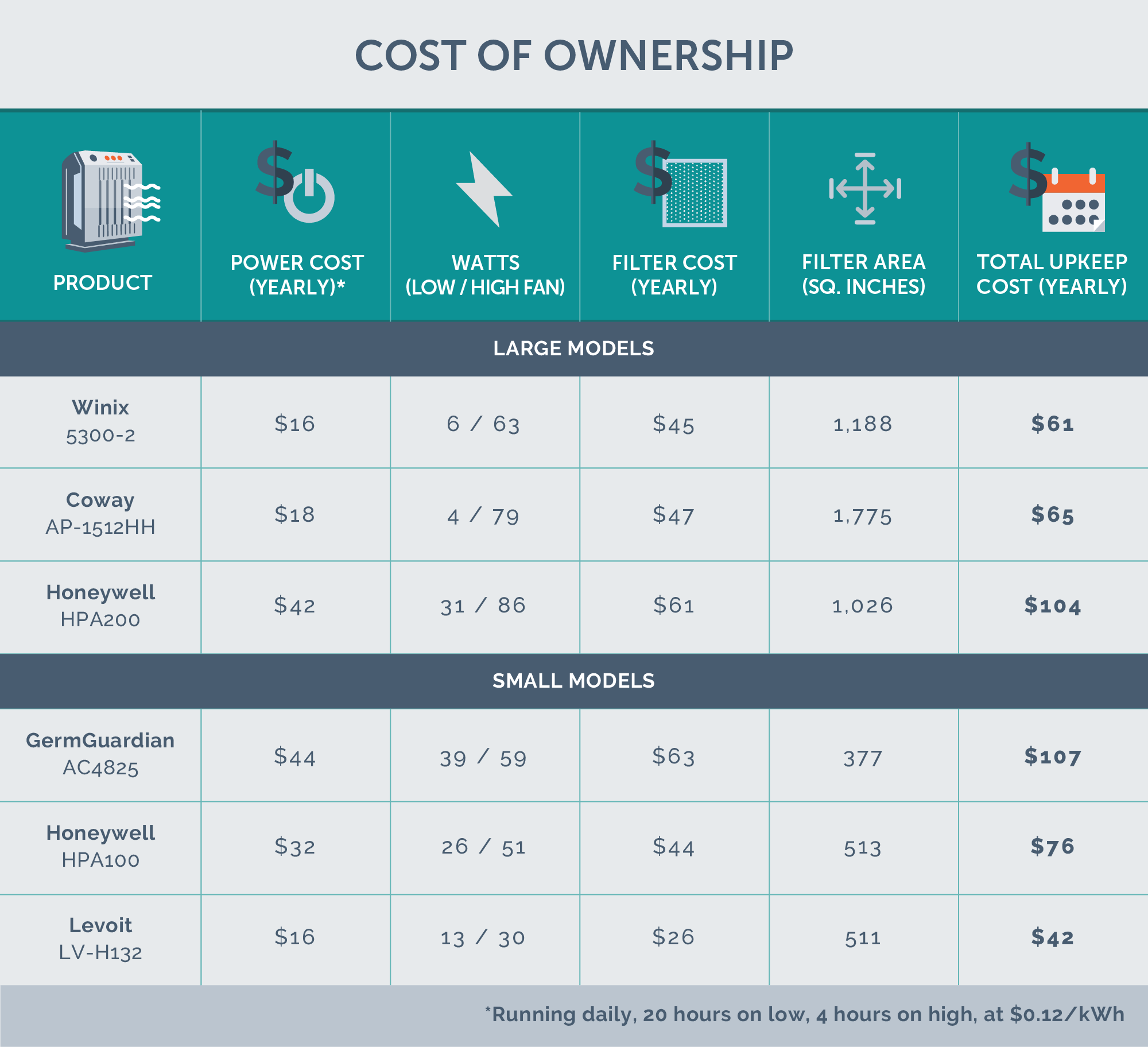
It’s important to note, however, that HEPA filters will work for a very long time before they get plugged with household dust. Levoit made their filter quite a bit bigger than it needs to be for the airflow capacity of the machine, so many households can count on it lasting a year or more.
Our Winix filter has lost about 10% efficiency over two years of regular use in a small household. Typically these filters lose some of their ability to attract ultra-fine dust first, then slowly plug up with larger dust and start to restrict airflow. If you’re really giving an air purifier a workout with dusty conditions, smoke, cooking oil and pet hair, it’s wise to stick to the annual replacement schedule.
The bottom line
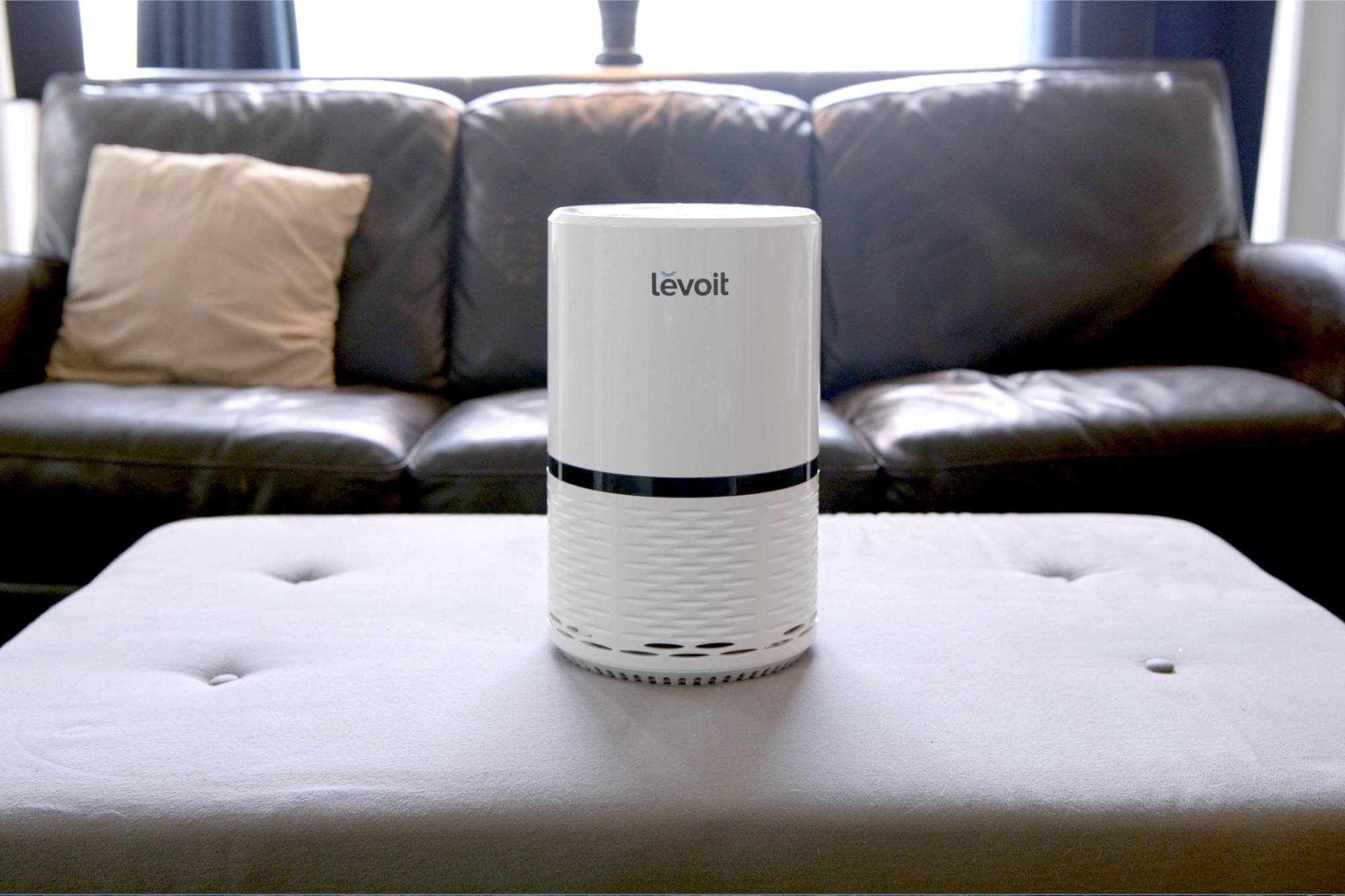
If you need an air purifier the size of a box of tissues, this is technically a product that will clean your air. The housing and controls are designed well, and you can turn off the blue light if you run it after dark.
But on all the points that matter most — speed to clean your air, efficiency and noise — the Levoit is beaten easily by bigger air purifiers turned to their just-as-quiet speed settings. The small fan inside this machine is simply not moving enough air to keep up with the competition.
More Reviews
Winix 5500-2 Air Purifier Review
Winix - 5500-2
Dyson – TP01 Fan & Air Purifier Review
Dyson - TP01
Shark - Apex
Frigidaire - FFAD7033R1
Winix - 5300-2
Honeywell - HEV620
Vornado - Vortex AVH10
The Best Book Subscription Boxes
Once Upon a Book Club
BEAUTURAL


